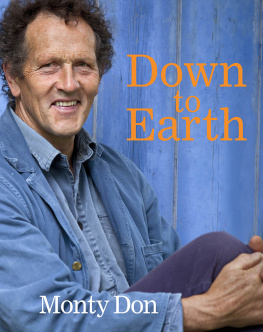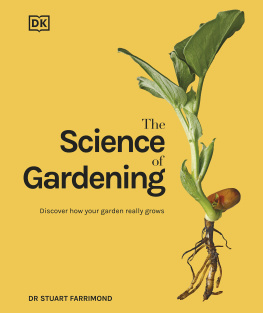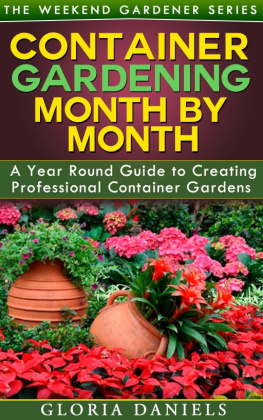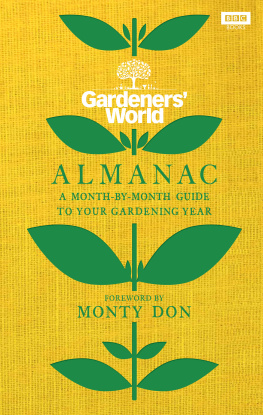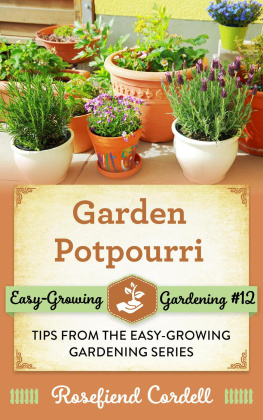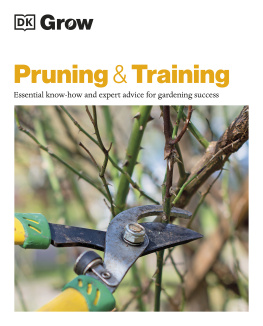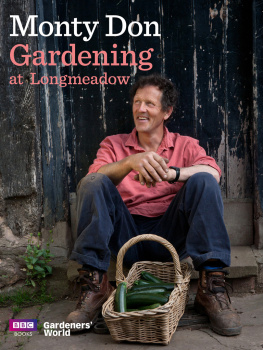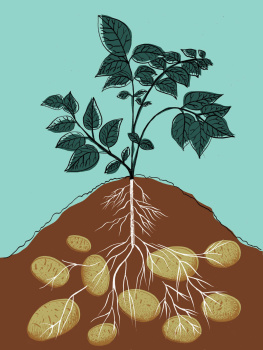Contents
Guide

Introduction
I began proper gardening at about seven but had always played in the garden, and at its best, gardening for me still has exactly the same allure that going out to make camps did as soon as I was old enough to run around outside.
But gardening was not always at its best. In fact, throughout my childhood I saw it as another chore that had to be completed in order that I would be free to play in the woods and lanes around the Hampshire village where I grew up. This was chalk country and I now realise that the vegetation of that very particular geology shaped my world as much as any other aspect of my upbringing. Beech woods, hazel coppice, fields waving with soft green barley and the glassy flints that pocked the chalk defined normality.
Around the same time that I was considered old enough to contribute to the onerous business of running a large garden, I was sent away to boarding school. Although a mere 18 miles away, the soil there was thin, sandy and very acidic. From it grew rhododendrons, heather and pines. My homesickness was as much a deep longing for the chalk landscape of my village as for my family.
But gardening came to me when I was about 17. By then I had acquired by default a working knowledge and could grow vegetables, make compost and keep the place looking fairly tidy.
One day in early spring I was preparing the ground for sowing carrots when I was filled with an ecstatic sense of being exactly where I wanted to be, desiring nothing but this completely fulfilled moment. Fixed somewhere between simple happiness and mystical ecstasy, this sense of completeness in the garden has never really left me.
That night I dreamt that my hands grew deep down into the chalky loam and took root. I awoke refreshed and knowing absolutely that all my future sustenance and fulfilment would be must be rooted in the soil.
But this has always been private and deeply personal. Other than at various stages as a student when I worked in France and England to help finance my studies, I have never earned my living as a gardener. I am an amateur and speak only from knowledge gained from private study and over 50 years of personal experience. I will admit to being completely infatuated with gardening and obsessively studying, with a large library that I refer to constantly. That sense of putting my hands deep into the earth and growing a beautiful garden solely for the pleasure and satisfaction of myself and my family has never left me.
But I believe that all good gardens are as much about the people that make them as the plants growing in them. You are an integral part of your garden. It will not exist without you.
So this book is an attempt to set out and share some of that personal knowledge that I have built up over the years. It is not intended as a text book or a definitive guide. Everything is based upon my own practical experience, combined with the deep sense of meaning that gardening has brought to my own life.
I have visited many gardens all round the world and have learned that gardens have to come from the heart or else they will never reach the head. You have to please yourself first and foremost or else you run the risk of pleasing nobody. And chasing after an ideal finish to a garden is doomed to disappointment. Every garden is a work in progress and is as complete as our lives are today. It changes. Always. It can always get better. It often gets worse. Be part of the change. Be flexible.
The process of making a garden is like a river running through your life. The place stays the same but the water, even on the stillest days, always moves.
I am always being asked for the right way to do things or the correct answer to a horticultural question. It seems we long for experts to dispense information and knowledge from on high that can then be slavishly followed. It really is not like that. Personal experience counts for a lot but the more you learn, the more glaringly obvious it becomes how little you know.
The right answers are few and far between and are nearly always very much less interesting and informative than the right questions. Failure teaches much more than success. Everyone makes mistakes all the time. Not making the same mistake twice is the key.
Even the greatest master the true expert is only scratching the surface of the incredible complexity and subtlety in their garden. So scratch that surface yourself if only to find out how little you know. Back yourself. A lot of success in growing anything well is a blend of confidence and intuition. Have confidence in your intentions and build intuition by exercising it. Pay attention. Look carefully. Gradually, knowledge and intuition will combine to inform each other and make the next observation more meaningful. And so it continues.
It is easy to cast yourself in the role of a conductor, controlling every note and beat of the garden. But modesty is the only appropriate attitude. Even the best gardener is not so much a conductor as a cross between the caretaker making sure the light bulbs are replaced and the member of the audience with the best seat in the house.
Life is short and absurd and run through with pain and sorrow. But even in the face of real suffering, gardening can make our days shine with joy.
Gardens heal. When you are sad, a garden comforts. When you are humiliated or defeated, a garden consoles. When you are lonely, it offers companionship that is true and lasting. When you are weary, your garden will soothe and refresh you.
I have had a very fortunate life. I have made gardens with someone that I love and this has brought me great happiness. You need luck to be happy. But make a garden and you increase your chances.
I hope that this book helps make your garden.
The Seasons
Know and go with the seasons. Do not fight them you will lose. This will not always be convenient, so learn to be flexible. And measure the seasons by your own backyard. When is it spring in your garden? How does winter lie there? At what point precisely is the shift from spring to summer? These are real questions and have precise answers that are different in every garden in the world. It is your autumn, your east wind, your shower of rain.
A good tip is to photograph your garden as much as possible and review the pictures out of season. It is a very useful way to map the seasons in your own garden. It is also an invaluable record of what was planted where and an aid to next years planting plans. You will be astonished how memory plays false, both for good and ill.
Spring
Wait till your garden is buzzing before planting or sowing too much. After a long and dark northern winter, we all yearn for spring and celebrate every little sign the first snowdrops, catkins, daffodils in the park, primroses flowering under a hedge but the most critical indicator is the presence of bees and other pollinating insects. Two things happen in spring: the nights get shorter and the air and critically the soil gets warmer. The first process of lengthening days is inevitable and begins in mid-winter. But most spring plants do not really get going until warmth appears, too not least because pollinators are few and far between in cold weather.

